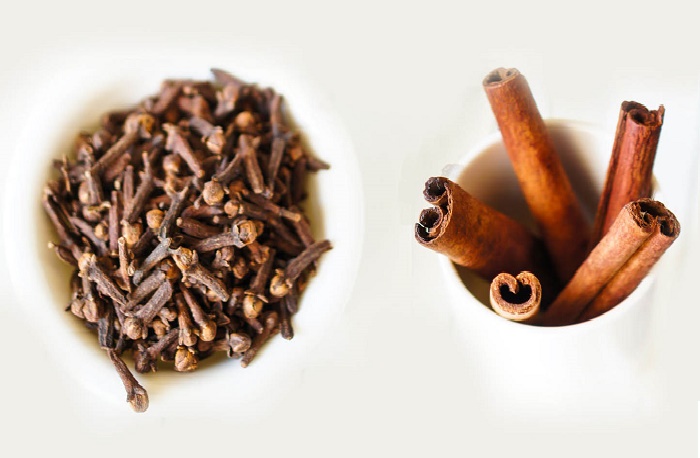Steps to make a therapeutic cinnamon oil

Cinnamon has many uses around the home, especially in cooking and in seasoning food. However, there is a more important use for cinnamon – it can be used as an alternative treatment for certain diseases. The type of cinnamon used for this purpose is cinnamon oil.

Cinnamon oil, modern researchers and scientists have discovered, contains powerful chemicals that can help kill bacteria and fungi. It can also be used to improve the health of our brain functions and our immune system.
Table of Contents
Potential uses of cinnamon oil
The following are the potential uses of cinnamon oil found in or on modern foundations. Use them to inspire your own ideas, experiment and see what works for you.
Against airborne bacteria
Diffuse cinnamon oil during cold and flu season, or add to a cotton ball and stick it on your car’s vent while driving.
Heal bacterial infections with cinnamon oil
Use cinnamon aromatically (such as diffusion) or topically (diluted). Try to massage the infection area into a carrier oil.
Bites / Stings
Prevent infections and irritations by diluting 1 drop of cinnamon bark oil with 3 drops of carrier oil and applying to the area.
Arthritis
Cinnamon oil warms the joints by stimulating blood flow and cinnamaldehyde, a key component of the oil, actually activates anti-inflammatory mediators making it very effective against conditions related to inflammation.
For arthritis, apply oil to the painful area every day. You should feel a warmth which will ease the pain.
Breathing
For respiratory problems start by diffusing into the air. You can also try massaging the chest and neck (diluted first).
Kitchen room
Cinnamon oil is “generally recognized as safe” by the FDA, and a quality mark can be used in cooking. Start with a single drop (or less, using a toothpick to take a small amount) until you know its proportions.
Diabetes
Cinnamon oil has been shown to help regulate blood sugar. Add to your food, take 1-2 drops in an empty capsule, or use for self-massage on the pancreas area.
Diverticulitis
Help decrease inflammation and promote healing by massaging diluted cinnamon oil throughout the abdomen daily.
Yeast infections
Diffuse in the air, and dilute to apply topically to the area of interest or to the soles of the feet for rapid absorption.
General tonic
Diffusing the oil in the air regularly is uplifting and supports the immune system. You can also use it topically, or in a bath (diluting it with a carrier oil).
Boosts the immune system
Diffuse throughout cold and flu season, inside the classroom (makes a great gift for teachers), or dilute and apply topically. Also consider an antiviral mix.
Infection
Depending on the type of infection, you can massage the diluted cinnamon oil on the soles of your feet, on the area of interest, or simply spread throughout the area.
Cinnamon oil stimulates libido
Cinnamon oil is said to be an aphrodisiac for many. Try it as aromatic or topical use on a regular basis (lower abdomen may be fine, but avoid genitalia).
Mushroom
Fight fungus and mold by applying cinnamon to the area. Use it in your cleaning products, spread regularly in mold-prone areas, or apply it directly.
Help for the pancreas
As stated, (diabetes), cinnamon has been found to support blood sugar levels and healthy pancreas function. Massage along the pancreas, on the soles of the feet, or using it in the kitchen as a supplement.
Physical fatigue
Cinnamon oil is hot and can increase circulation, blood flow to the brain, and energy levels when used aromatically. Try it in a diffuser or through massage.
Pneumonia
During illness, diffusing cinnamon bark oil in the room can help the healing process.
Typhoid
This bacterial infection can be cleared with cinnamon. Apply a diluted mixture to the soles of your feet daily, or use it for a full body massage. Spread regularly.
Vaginal infection / vaginitis
The cinnamon oil diluted can help in the fight against infections. Make sure to check the sensitivity. Start by diluting and massaging the lower abdomen, or the reflex points of the feet.
Cinnamon oil against viral infections
Very antiviral, massage the diluted cinnamon oil on the soles of the feet, on the area of interest, or all over the body.
Other possible uses of cinnamon oil include: boosting circulation, fighting colds or coughs, aids in digestion, increases energy, relieves inflammation associated with rheumatism, and even removes warts.
Steps to make cinnamon oil
You may be interested to know that you can make cinnamon oil on your own using very simple methods and saving money.
Items needed: cinnamon sticks, a glass jar, preferably amber or green with a wide mouth and straight sides (to make it easier to strain the substances), and olive oil.
- Get enough cinnamon sticks and put them inside the glass jar. Fill in all the blanks, if possible.
- Pour the olive oil inside the jar until all the cinnamon sticks are completely covered.
- Put the mason jar in a warm place like by the window. It ensures so that it does not fall. Leave the jar for about three weeks.
- Shake the bottle daily. This will release the cinnamon oil from the base oil.
- After three weeks, the oil from the cinnamon sticks will be completely released and will form like cinnamon oil. Using a piece of cheesecloth or similar material, strain the cinnamon oil. You can also use your fingers to scoop the cinnamon oil from the sticks.
- Put the cinnamon oil in an amber bottle and store in a cool, dry place.


